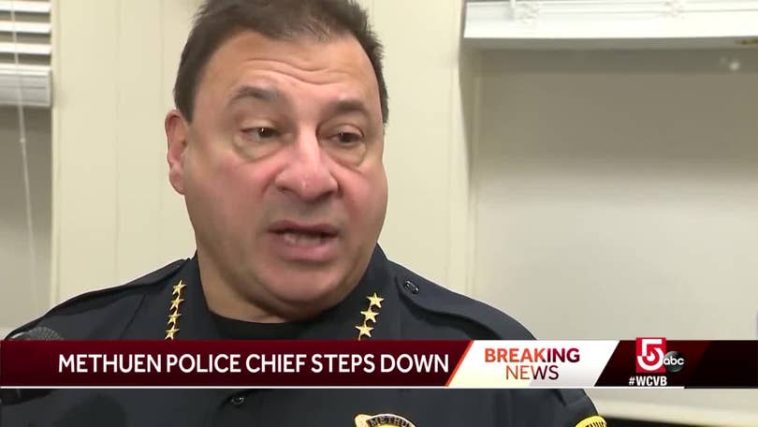In assuming command of the Minneapolis Police Department in 2022, Chief Brian O’Hara felt it was akin to stepping into a bereaving household. This department was mired in the controversy where an officer was responsible for the death of George Floyd. O’Hara acknowledges this event had profound impacts on the department, as currently it operates at nearly 60% of its 2020 strength.
Since 2020, a universal trend has been observed across the United States; law enforcement agencies of major cities have been downsizing. As a countermeasure, pay escalations for officers are now commonplace. However, critics argue that remuneration alone is not sufficient to attract individuals to law enforcement and retain them.
A report by the Police Executive Research Forum (PERF) suggests that large law enforcement agencies’ workforce has shrunk by approximately 5% compared to four years ago. This reduction has notably impacted Minneapolis, as per O’Hara’s account. The repercussions of fewer detectives and patrolling officers are felt across the city by its residents.
According to O’Hara, diminished staff means officers now have limited capacity for check-ins and direct engagements with community members. There has been a shift towards solo-officer cars, and the possibility of delayed assistance is a concern due to fewer available backups. The reduction in law enforcement presence is undoubtedly felt by the citizens.
Usually, the determination of adequate police numbers involves evaluation against a series of criteria such as population size, crime statistics, and budget constraints. However, there’s no fixed golden ratio, and research presents varied arguments on whether increased police numbers or expenditure predicts crime levels.
The precise optimum number of law enforcement officers remains an area of quandary, says Duke University Law Professor Ben Grunwald. A similar sentiment is echoed by Chuck Wexler, Executive Director of PERF, who labels the struggle by large departments to attract and retain officers as a sign of the times.
In Wexler’s view, a combination of increased resignations, retirements, and a decreasing pool of aspiring police officers presents a unique challenge. As a result, departments have been compelled to resort to incentives. Monetary reward has incidentally emerged as the primary incentive in at least 20 major U.S. cities.
From the commencement of 2023, police officers across the nation saw substantial salary hikes. However, in Minneapolis, there has been a backlash against police salary increments, especially considering the city’s significant payouts following police misconduct issues. Despite the resistance, O’Hara firmly champions the cause of these pay increments.
O’Hara argues that to warrant quality law enforcement, fair compensation is an absolute prerequisite. With the job landscape of today’s police force being incredibly challenging, attracting talent in absence of competitive salaries is an uphill task. While not the sole solution, commensurate remuneration is a critical element in addressing the prevailing situation, says O’Hara.
Similarly, views of Jill Snider, a retired officer from the New York City police department, align with O’Hara’s stance. Snider, who is also a policy director at the R Street Institute—promoting limited governance—states that while public servants are aware of the job’s challenges beforehand, the compensation often falls short of expectations.
Interestingly, some cities defy the shrinking trend of police personnel. According to PERF’s data, some smaller departments have rebounded from a slump and currently host more officers than in 2020. One such case is Bloomington, Minnesota, a suburb south of Minneapolis with a population close to 90,000.
Bloomington’s police force is unique in that it has more officers than necessary. Officer Devon Barnum, a 23-year-old native who has served less than a year, asserts his unwavering commitment towards his community. According to Barnum, no financial benefit could entice him to serve another police department.
Barnum attributes his commitment to the support from his community and admiration for his police chief, making monetary concerns secondary. Over the past few years, Bloomington’s police department has increased the officer’s pay, but only at a modest rate of about 3% annually.
Bloomington Police Chief, Booker Hodges, doesn’t envisage larger pay increments. Resolutely maintaining his belief, he states that monetary incentives aren’t the best motivators. His vision seeks officers whose work ethos is driven by purpose as it, according to him, carries more weight than monetary compensation.
Hodges, the first Black police chief of the city and former president of the Minneapolis NAACP, has a clear understanding of the community-police dynamics. His goal is fostering mutual respect between community and officers for a conducive work atmosphere.
From Hodges’s perspective, perennial understaffing leads to extra working hours subsequently creating a harmful cycle. He argues that prolonged shifts negatively affect an officer’s alertness, family time, and overall wellbeing. In contrast, a well-rested, content, and purpose-driven police force, he says, does not solely depend on monetary rewards.


